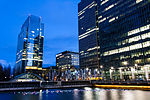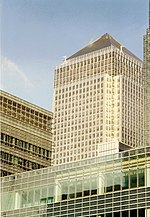International Sugar Organization
The International Sugar Organization is an intergovernmental organization, based in London, which was established by the International Sugar Agreement of 1968, as the body responsible for administering the Agreement. Unlike its predecessors under pre-1968 versions of the International Sugar Agreement, it does not have the power to regulate the international sugar trade by price-setting or export quotas but seeks to promote the trade in and consumption of sugar by gathering and publishing information on the sugar market, research into new uses for sugar and related products and as a forum for intergovernmental discussions on sugar. As of June 2017, its membership consisted of 87 countries.
Excerpt from the Wikipedia article International Sugar Organization (License: CC BY-SA 3.0, Authors).International Sugar Organization
South Colonnade, London Isle of Dogs
Geographical coordinates (GPS) Address Nearby Places Show on map
Geographical coordinates (GPS)
| Latitude | Longitude |
|---|---|
| N 51.5049489 ° | E -0.0216893 ° |
Address
South Colonnade (The South Colonnade)
South Colonnade
E14 5AB London, Isle of Dogs
England, United Kingdom
Open on Google Maps










